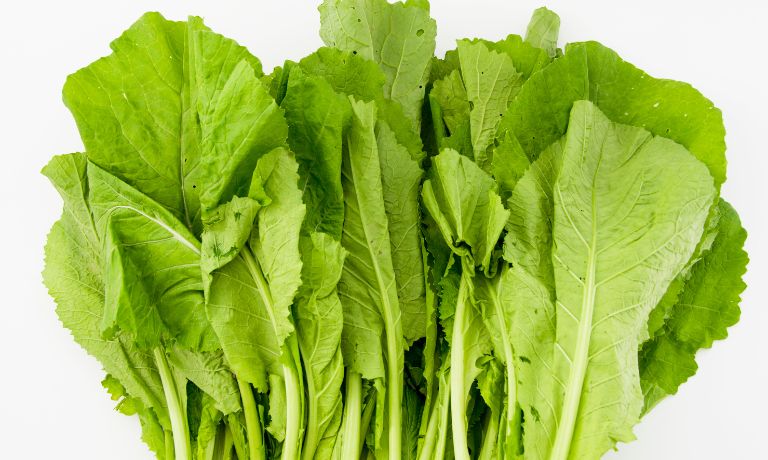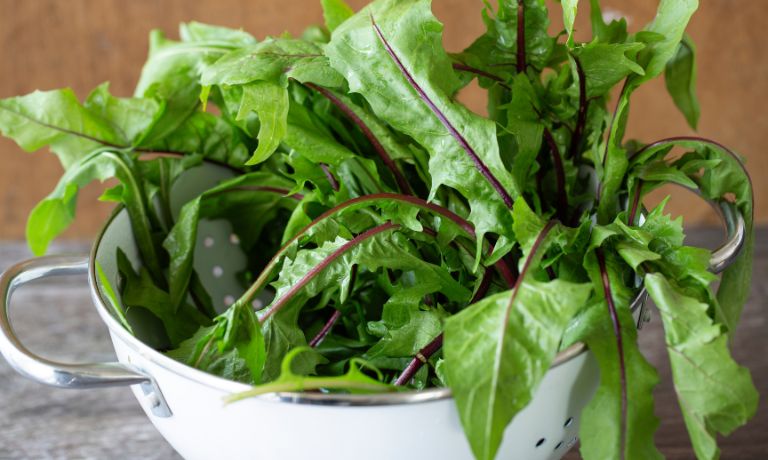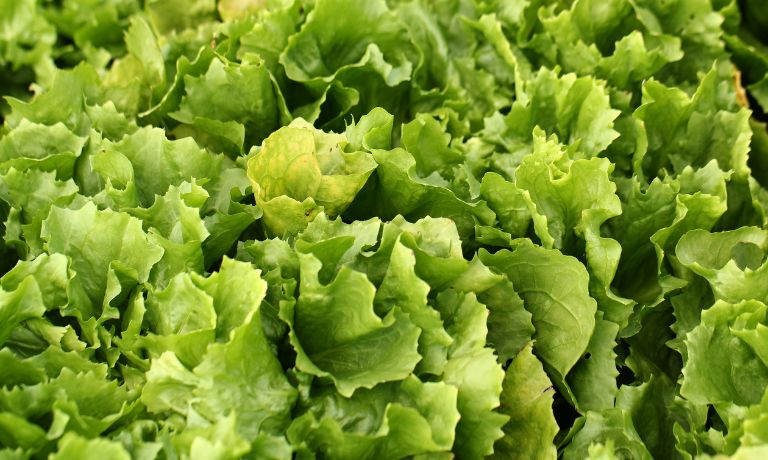Mustard greens are a delicious and nutritious addition to many meals, but if you’re looking for something new as an alternative, you’ve come to the right place.
Through exploring the flavor profile of mustard greens, this blog post acts as a guide that will have cooking every dish feasible!
So let’s dive in and discover ways to add some excitement to your kitchen.
What Are Mustard Greens?
Mustard greens are leafy green vegetables from the Brassica family, including kale, cabbage, and broccoli.
They have a distinct sharp flavor that is slightly spicy and tangy.
Mustard greens can be eaten raw in sandwiches, salads or cooked in various dishes, such as stir-fries, soups, and stews.
They are a great vitamin source and minerals such as calcium and iron.
Mustard greens are also high in fiber and antioxidants, which can help protect against certain diseases.
When cooking mustard greens, it is best to steam or sauté them rather than boil them to preserve their nutrition and flavor.
You can use mustard greens in various recipes, from salads and soups to omelets and stir-fries.
Adding them to your diet will give you the many health benefits they provide.

Substitutes For Mustard Greens
Mustard greens are a popular vegetable in many cuisines but can be hard to find or prepare. Several options are available:
Kale
Kale is a cruciferous vegetable in the same family as cabbage, broccoli and Brussels sprouts.
It’s believed to have originated in the Mediterranean region but is now widely grown throughout Europe, North America and Australia.
Kale has thicker, more fibrous leaves than mustard greens, making it easier to use in cooked dishes.
Additionally, it contains minerals such as calcium, iron and magnesium.
Kale can be used as an alternative to mustard greens in many dishes, including soups, stews, salads and rice pilafs.
The leaves can also be dried or frozen for later use.
With its unique flavor and nutritional benefits, kale is a great substitute for mustard greens in any recipe.
Kale is also a much more economical choice than mustard greens, making it an attractive option for those on a budget.
The vegetable can be bought fresh or frozen, so it’s easy to find in most grocery stores.

Spinach
Spinach is a vegetable with the leafy green that is full of nutritional benefits.
It’s low in calories, high in fiber and vitamins A, C, E and K, and minerals like iron and calcium.
Spinach is an alternative to mustard greens because of its nutritional value, mild flavor and versatility in cooking.
It can be used as a raw ingredient in salads or cooked into soups, stews, casseroles and other dishes.
Spinach is also great for adding color to meals and providing a healthy green boost.
Additionally, spinach can be a great option for those looking to cut down on their sodium intake or simply trying to eat more nutritious meals.
It’s easy to prepare, and you can use it in various delicious meals.

Turnip Greens
Turnip greens are the edible green leaves of a root vegetable, commonly known as turnip.
They taste slightly bitter, and you can eat them cooked or raw.
Turnip greens have a milder flavor than mustard greens, making them more versatile when used in recipes.
They are also much lower in calories and contain nearly twice as much vitamin C and dietary fiber.
You can use them in salads, sautéed with garlic and olive oil, added to soups or used in many dishes such as creamed spinach, stir-fries, collard wraps and more.

Dandelion Greens
Dandelion greens are a leafy vegetable that can be eaten raw or cooked with other vegetables, or made into a soup.
Dandelion greens are often used to make pesto, omelets, soups and stews.
When substituting dandelion greens for mustard greens in a recipe, remember that dandelion greens have a slightly bitter flavor which may need to be masked with other ingredients.
For example, adding a bit of olive oil and garlic can help bring out the greens’ flavor.
Additionally, when cooking with dandelion greens, it is usually best to add them at the end of preparation as they can turn mushy if cooked for too long.

Collard Greens
Collard greens are cruciferous vegetables in the same family as cabbage, kale, and cauliflower.
The leaves taste slightly more bitter than mustard greens. The leaves can be boiled, steamed, sautéed, stir-fried, or braised.
Due to its mild flavor, collard greens will provide nutrients without overpowering the other flavors of the dish.
Collard greens can be added to soups, salads or as a wrap for sandwiches and burritos.

Swiss Chard
Swiss Chard is a vegetable with leafy green, similar to spinach but with a slightly bitter taste.
It is a great vitamin source, dietary fiber and magnesium.
Swiss chard’s flavor is milder than mustard greens, making it suitable for salads or as a side dish on its own.
It can also be used in soups, stews and casseroles or as a substitute for spinach in lasagna.
Additionally, it can be an ideal replacement for mustard greens when you want to add extra flavor without the strong taste of mustard.
Swiss chard can be steamed, roasted or sautéed to bring out the best flavor, and it goes well with garlic, onions, tomatoes and other vegetables.

Escarole
Escarole is an endive, leafy green in the Chicory family. It has a mild and slightly bitter taste similar to mustard greens.
Unlike other varieties of endive, you can eat it cooked or raw. When cooked, escarole becomes tender and sweet with an interesting texture.
Its flavor differs slightly from mustard greens but still provides a nice balance of bitterness and sweetness.
You can use it in salads, soups, sautés, or as a side dish.
Try swapping out the mustard greens for escarole in dishes such as stir-fries, curries, and braises to add a unique flavor.

FAQs
Can Arugula Be Used In Place Of Mustard Greens?
Yes, it is possible to use arugula as a substitute for mustard greens in some recipes.
However, arugula has a much milder flavor than mustard greens and may not provide the same level of nutty spiciness as traditional mustard greens.
Do Mustard Greens Resemble Spinach In Any Way?
Yes, mustard greens have a similar flavor profile to spinach – slightly bitter and tangy.
They look quite different, however. Mustard greens are heartier looking with wide, dark green leaves that can be frilly or smooth in texture.
Spinach is softer and more delicate, with small oval-shaped leaves that are lighter in color.
Are Mustard Greens And Watercress The Same Thing?
No, mustard greens and watercress are not the same thing.
Mustard greens are leafy with a slightly spicy flavor, while watercress is an aquatic plant with a mild peppery flavor.
Conclusion
Mustard greens are nutritious and flavorful leafy green, but they can be difficult to find or expensive to purchase.
Fortunately, there are many options that you can substitute for mustard greens out there with the same nutritional benefits.
Kale, spinach, turnip greens, dandelion greens, collard greens, Swiss chard and escarole, are all good substitutes for mustard greens that you can use in many recipes.
Whether you’re looking to cut down on your sodium intake, add a healthy green boost to your meals, or simply experiment with something new, these alternatives will provide the same nutrition and flavor as mustard greens.
So get creative in the kitchen and give them a try!

